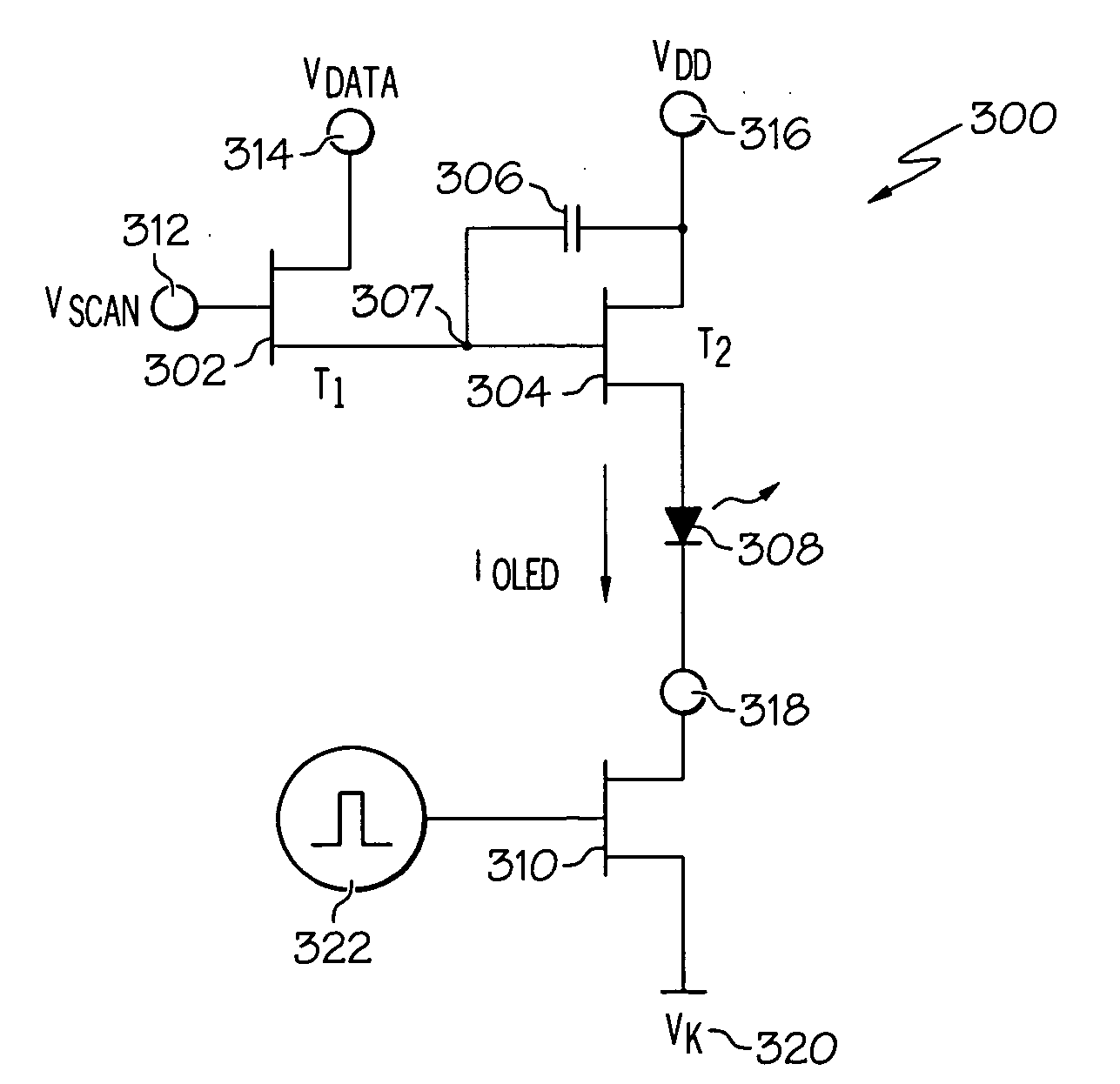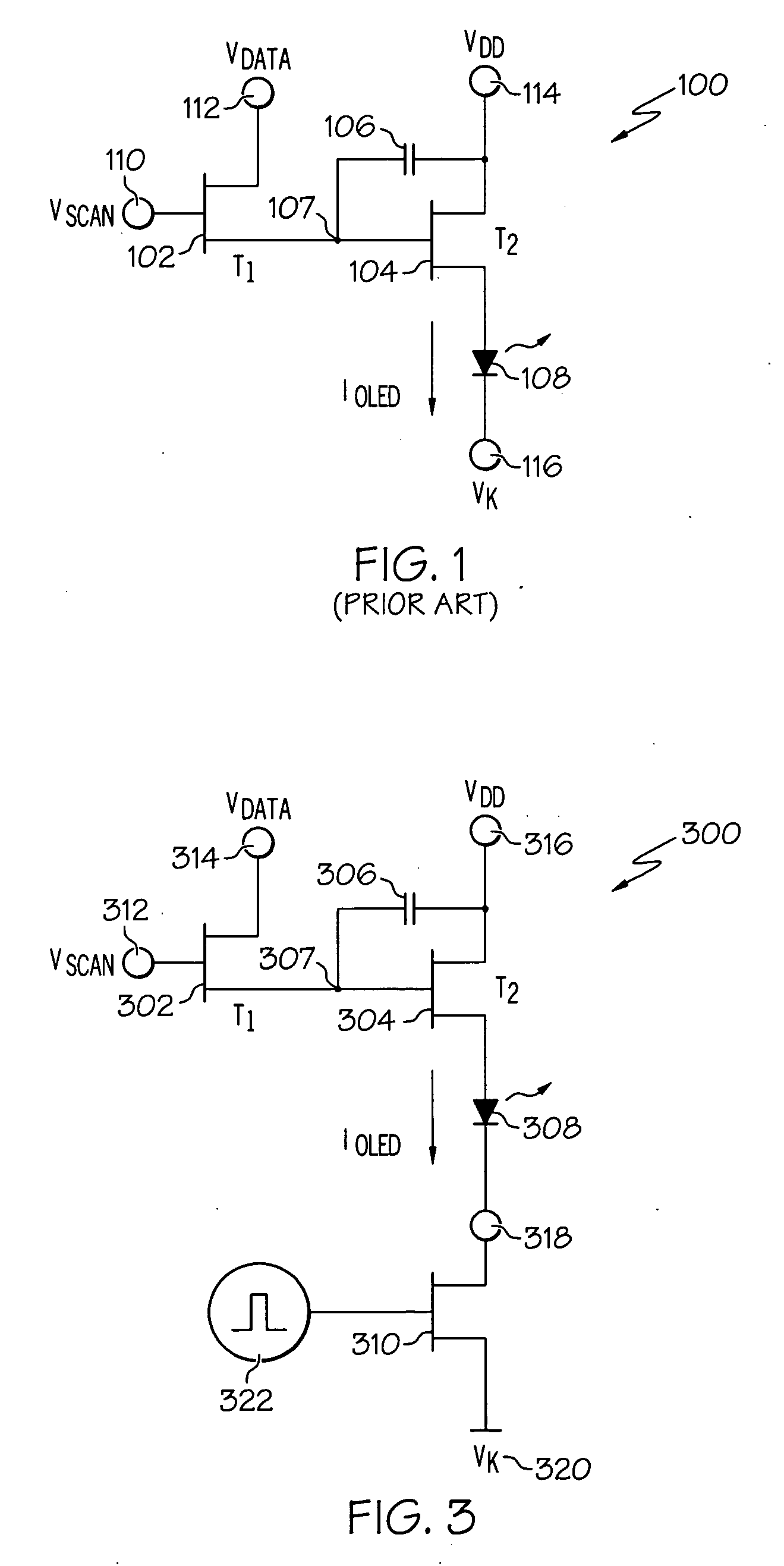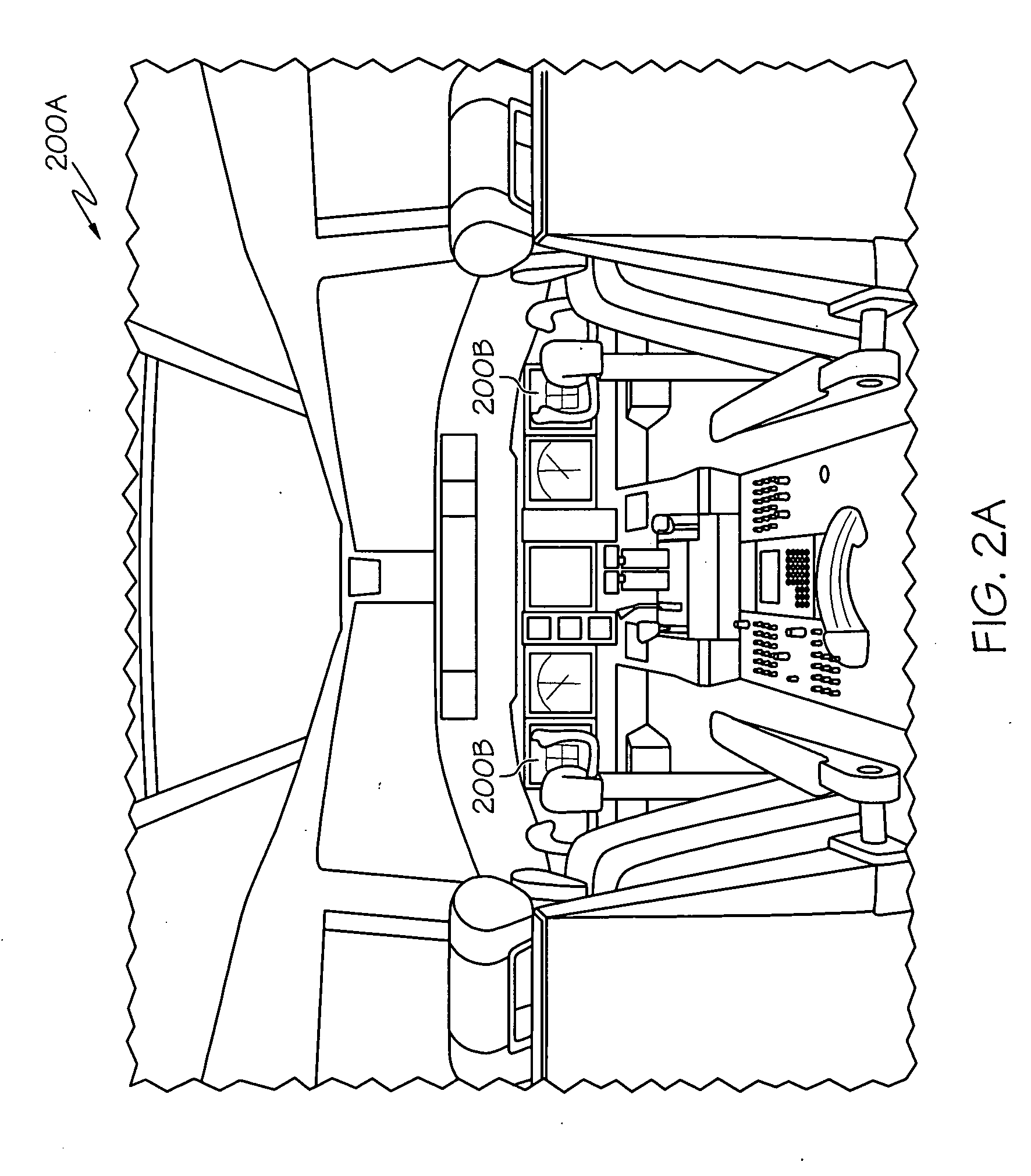Active matrix organic light emitting diode display
a technology of organic light and diodes, applied in the field of flat panel displays, can solve the problems that the wide dynamic range dimming (e.g., >2000:1) cannot be achieved with suitable uniformity, and achieve the effect of maintaining color balance, maintaining luminance and chromaticity of the display, and low gray-levels
- Summary
- Abstract
- Description
- Claims
- Application Information
AI Technical Summary
Benefits of technology
Problems solved by technology
Method used
Image
Examples
first embodiment
[0025]FIG. 3 depicts an electrical schematic diagram of an example AM OLED sub-pixel circuit 300, which can be used to implement the present invention. As such, AM OLED sub-pixel circuit 300 can be used in a preferred method for dynamically dimming an AM OLED display using, for example, an external (to the display) PWM scheme. Referring now to FIG. 3, AM OLED sub-pixel circuit 300 includes a first TFT 302, a second TFT 304, a storage capacitor 306, an OLED pixel 308, and a transistor 310, represented here by a Field Effect Transistor (FET). As shown, transistor 302 is a scan transistor, and transistor 304 is a drive transistor. The gate terminal 312 of the scan transistor 302 is connected to the row (scan / row enable) address bus of the display involved, and the drain terminal 314 of scan transistor 302 is connected to the column (data) address bus of the display. The source of scan transistor 302 is connected to the node 307 at the storage capacitor 306 and the gate terminal of the ...
second embodiment
[0029]FIG. 4 depicts an electrical schematic diagram of an example AM OLED sub-pixel circuit 400, which can be used to implement the present invention. As such, AM OLED sub-pixel circuit 400 can be used in a preferred method for dynamically dimming an AM OLED display using, for example, an external (to the display) PWM scheme. Referring now to FIG. 4, AM OLED sub-pixel circuit 400 includes a first TFT 402, a storage capacitor 404, a second TFT 408, an OLED pixel 410, and a transistor 406 represented here by a P-channel FET. In this case, an external (to the display involved) transistor 406 can be used to PW modulate the positive power supply, VDD 418, of the OLED pixel 410, in order to turn “off” the voltage across the OLED pixels (e.g., OLED pixel 410) associated with the common power supply voltage, VDD 418, and thus to control the brightness of the display. Also, in this case, the reference voltage, VSC 416, for storage capacitor 404, can be removed from the VDD line to prevent c...
third embodiment
[0033]FIG. 5 depicts an electrical schematic diagram of an example AM OLED sub-pixel circuit 500, which can be used to implement the present invention. As such, AM OLED sub-pixel circuit 500 can be used in a preferred method for dynamically dimming an AM OLED display using, for example, an internal (to the display) PWM scheme. Referring now to FIG. 5, AM OLED sub-pixel circuit 500 includes a first TFT 502, a storage capacitor 504, a second TFT 506, a third TFT 508, and an OLED pixel 510. In this case, a third TFT 508 (internal to the display involved) can be used at each sub-pixel in the display to PW modulate the current, IOLED 518, of the OLED pixel 510, in order to turn “off” the OLED pixel (e.g., OLED pixel 510) so that it does not emit light, and thus control the brightness of the overall display.
[0034]As shown, for this example embodiment, transistor 502 is a scan transistor, and transistor 506 is a drive transistor. The gate terminal 512 of the scan transistor 502 is connecte...
PUM
 Login to View More
Login to View More Abstract
Description
Claims
Application Information
 Login to View More
Login to View More - R&D
- Intellectual Property
- Life Sciences
- Materials
- Tech Scout
- Unparalleled Data Quality
- Higher Quality Content
- 60% Fewer Hallucinations
Browse by: Latest US Patents, China's latest patents, Technical Efficacy Thesaurus, Application Domain, Technology Topic, Popular Technical Reports.
© 2025 PatSnap. All rights reserved.Legal|Privacy policy|Modern Slavery Act Transparency Statement|Sitemap|About US| Contact US: help@patsnap.com



